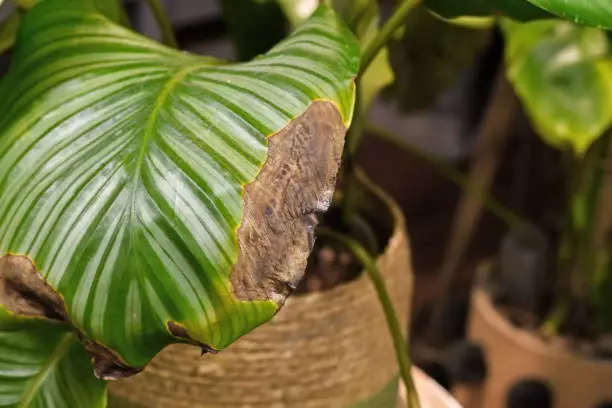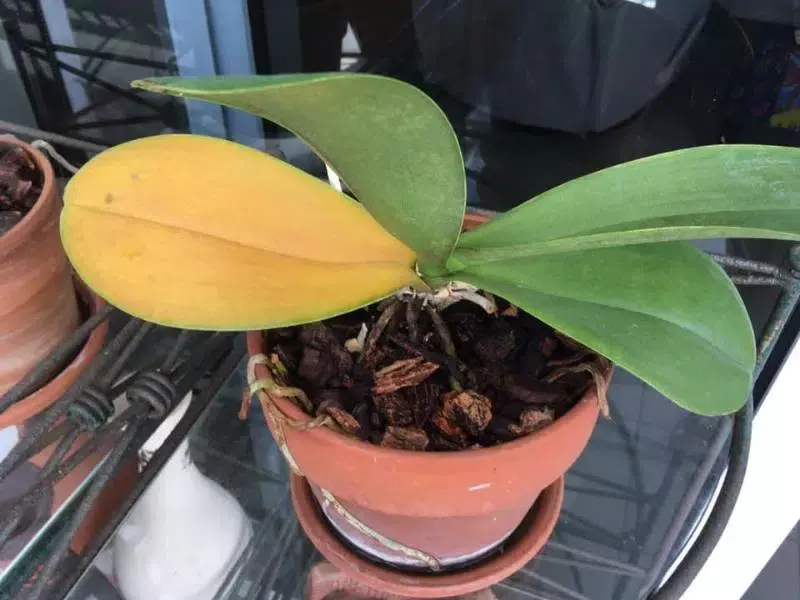The queen of the night cactus, also known as the night-blooming cereus, is a fascinating plant that blooms only during the night. It is famous for its large, fragrant flowers that unfurl in the darkness, creating an enchanting spectacle in any garden or indoor space. As exotic and alluring as these plants may be, caring for them requires some specific knowledge and attention to detail to ensure their long-lasting beauty.
Growing the queen of the night cactus can be a rewarding experience for gardeners who seek unique and captivating plants. In order to achieve success with this plant, understanding its native habitat and essential growth requirements is crucial. The following care guide aims to shed light on the necessary elements for optimal growth, including soil, watering, light, and temperature needs, as well as any potential issues one may face while cultivating this mysterious beauty.
Overview
The Queen of the Night Cactus, scientifically known as Epiphyllum oxypetalum, is a captivating and unique houseplant. It belongs to the cactus family and is more commonly referred to as the Orchid Cactus, owing to its stunning large, white, night-blooming flowers that resemble those of orchids.
This fascinating cactus is native to Central and South America, where it thrives in tropical and subtropical climates. As a succulent plant, the Queen of the Night Cactus boasts fleshy, flattened, and elongated stems that store water and contribute to its impressive drought tolerance. Despite its cactus heritage, the plant lacks the characteristic spines seen in many other cactus species.
Caring for a Queen of the Night Cactus requires understanding its unique lighting, watering, and temperature requirements. As an epiphytic plant, it often grows on trees in its natural habitat, so it does well in well-draining potting mixes rich in organic matter. The plant prefers moderate light conditions, making it suitable for indoor cultivation. However, it is essential to keep it away from direct sunlight, as too much sun can cause damage to its stems.
Watering the Orchid Cactus should be done cautiously, ensuring that the soil does not remain waterlogged. Overwatering can lead to root rot while under-watering may hinder growth and flowering. Additionally, maintaining adequate humidity and temperature within its optimal range of 60-70°F (15-21°C) promotes healthy growth.
Fertilization is another essential aspect of Queen of the Night Cactus care. During the growing season, feeding the plant with a balanced, water-soluble fertilizer once a month will encourage growth and lead to lush, vibrant foliage.
Native habitat and climate
The Queen of the Night cactus (Epiphyllum oxypetalum) is native to Southern Mexico and several Central American countries. This unique plant is typically found in tropical and subtropical regions where there is high humidity and moderate temperatures. It is an epiphytic plant, which means it grows on trees, using them for support without taking any nutrients. This allows the cactus to absorb moisture and nutrients from the air and its surroundings.
The plant thrives in environments where temperatures range from 50°F to 90°F (10°C to 32°C). It prefers hardiness zones 10 through 12 and can tolerate brief periods of colder temperatures but may suffer damage if exposed to extensive cold or frost. In its native habitat, the Queen of the Night cactus typically grows under the protection of larger trees, which provide shade and guard it from direct sunlight.
To successfully grow a Queen of the Night cactus, it’s essential to recreate its natural habitat as closely as possible. Key factors for optimal growth include:
- Maintaining high humidity levels, usually around 60% to 80%
- Providing filtered sunlight or dappled shade, replicating the natural tree canopy protection
- Ensuring well-draining soil with a neutral to slightly acidic pH, mimicking the organic debris found on tree branches
- Offering adequate air circulation, similar to the natural breeze in a tropical forest
By understanding its native habitat and climate, you can create the optimal environment for your Queen of the Night cactus to prosper and thrive. Implementing these conditions will encourage healthy growth and help you enjoy its exquisite blooms for years to come.
Temperature requirements
The Queen of the Night cactus, also known as the Night Blooming Cereus, thrives in temperatures that mimic its natural habitat. It is essential to provide the right temperature requirements for this unique plant to grow healthy and strong.
During the daytime, the plant prefers temperatures ranging from 65 to 90 degrees Fahrenheit (18 to 32 degrees Celsius). This temperature range allows the Queen of the Night cactus to photosynthesize efficiently and grow at a steady pace.
To achieve proper flowering and growth, it is also vital to consider the nighttime temperature requirements. For the Queen of the Night cactus, nighttime temperatures should be lower, ideally between 55 to 65 degrees Fahrenheit (13 to 18 degrees Celsius). This drop in temperature simulates the plant’s natural desert-like environment and encourages healthy blooming patterns.
Additionally, remember to protect the plant from extreme temperature fluctuations, such as rapid drops in temperature or direct exposure to heating or cooling vents. Sudden temperature changes can stress the plant and lead to damage or stunted growth.
Keep in mind that proper temperature management is just one aspect of Queen of the Night cactus care. Along with maintaining ideal temperatures, ensure adequate light, watering, and soil conditions to provide the best possible environment for this beautiful and rare cactus species.
Light and sunlight requirements
The Queen of the Night cactus thrives under specific light conditions to ensure optimum growth and blooming. It is essential to understand its sunlight and light requirements for effective care.
The cactus prefers indirect sunlight rather than being exposed to direct sunlight for long periods. Prolonged exposure to harsh, direct sunlight may cause damage to the plant, such as scorching and discoloration. A balance of sunlight exposure is crucial in maintaining the health of this unique cactus.
Providing filtered light is ideal to encourage growth. The Queen of the Night cactus benefits from bright but diffused light, which can be achieved by placing it near a window with sheer curtains, under a shade cloth, or behind other taller plants.
The morning sun is particularly beneficial for the Queen of the Night cactus. It provides the cactus with the necessary light to begin its daily growth processes while being gentle and less intense than the afternoon sun.
To sum up, when caring for a Queen of the Night cactus, pay attention to its light requirements. Finding a location with indirect sunlight, filtered light, and exposure to morning sun will contribute significantly to the cactus’s overall health and growth.
Watering and humidity
The Queen of the Night cactus thrives under proper watering and humidity conditions. To maintain the health of this unique plant, it is vital to understand its water requirements and provide adequate humidity levels.
Watering the Queen of the Night cactus is a delicate balance, as it requires consistent moisture while avoiding overwatering. During the growing season, from spring to summer, it’s best to water the plant when the top inch of the soil becomes dry. This prevents the plant from sitting in excess moisture, reducing the risk of root rot. However, during the winter months when the plant is dormant, reduce the watering frequency to once every four to six weeks. The lower temperatures and decreased sunlight mean the plant requires less water in this period.
Rain can also affect the watering schedule for the Queen of the Night cactus. If the plant is located outdoors and experiences consistent rain, it may be necessary to adjust the watering routine accordingly. Keep a close eye on the soil moisture level to ensure the plant isn’t oversaturated or left too dry for an extended period.
Humidity plays a significant role in keeping the Queen of the Night cactus healthy and blooming. These plants naturally grow in habitats with high humidity levels. To mimic these conditions, maintain a relative humidity level of around 50% to 60% for optimal growth. If the indoor environment has low humidity, consider using a humidity tray or a humidifier to boost moisture levels around the plant.
Regular misting can also help maintain the desired humidity level. Lightly mist the plant every few days to increase humidity without overwatering the soil. However, avoid misting the flowers when in bloom, as excess moisture on the petals can lead to damage.
In summary, careful attention to watering and humidity is crucial for the health and survival of the Queen of the Night cactus. Monitoring soil moisture, adjusting watering routines, and maintaining optimal humidity levels will ensure this captivating plant thrives and displays its stunning nocturnal flowers.
Soil and pH
Queen of the night cactus thrives best in well-drained soil with a slightly acidic pH level. The ideal potting mix for this plant should contain a combination of organic matter and inorganic materials, such as peat moss, perlite, and sand.
To create a suitable potting mix, start by combining equal parts peat moss and perlite. Peat moss provides the necessary organic matter for the plant, while perlite enhances drainage and aeration. Next, add a smaller portion of sand, which contributes to the well-drained nature of the soil. This mixture should provide the queen of the night cactus with the proper balance of nutrients and drainage, ensuring its healthy growth.
In terms of pH level, the queen of the night cactus prefers slightly acidic soil, with a pH range of 6.0 to 7.0. Acidic soil helps the plant absorb essential nutrients more effectively and promotes robust growth. To maintain the optimal pH level, test the soil periodically and, if necessary, amend it with appropriate materials. For instance, if the soil is too alkaline, adding peat moss or other organic matter can help increase its acidity.
It is important to monitor the Queen of the Night cactus’s soil and pH conditions regularly, ensuring that the plant thrives in a healthy environment. By providing a well-drained, slightly acidic potting mix, this captivating cactus will continue to flourish and produce stunning blooms.
Fertilizing and nutrients
Queen of the night cactus, also known as the night-blooming cereus, is a low-maintenance plant that requires minimal fertilizing. To ensure the healthy growth of the plant, proper nutrients are essential. This includes a well-balanced fertilizer and the addition of organic matter if necessary.
Using a balanced fertilizer with equal parts nitrogen, phosphorus, and potassium (NPK) will provide the necessary nutrients for the plant. A 10-10-10 or 20-20-20 fertilizer can be applied during the growing season, which typically begins in spring and continues through early autumn. It is recommended to fertilize once a month, making sure not to over-fertilize as this can harm the plant.
In addition to balanced fertilizers, adding organic matter to the soil can further benefit the cactus. One natural and cost-effective option is using dried banana peels, which are rich in potassium and can help promote flower production. To use dried banana peels, simply chop them into small pieces and bury them directly into the soil or add them to the compost pile.
If one prefers an alternative plant food, there are options available designed specifically for cacti and succulents. These specialized fertilizers often have a lower nitrogen content, as excessive nitrogen can lead to excessive vegetative growth at the expense of flower production. A slow-release fertilizer can also be beneficial, as it provides nutrients over an extended period of time.
It is worth noting that the queen of the night cactus is quite resilient and can tolerate nutrient-deficient soils. However, providing optimal nutrients can encourage growth and ensure the plant thrives, producing its unique and fragrant blooms during the night.
Blooms and fragrance
The Queen of the Night cactus, also known as the night-blooming cereus, is an epiphyllum species revered for its stunning, fragrant flowers. These flowers are characterized by their size, beauty, and the captivating sweet smell they emit.
Blooming typically occurs during the summer months when the plant receives optimal exposure to light and warmth. The flowers of the Queen of the Night cactus emerge from the epiphyllum stems, and each bloom lasts only one night. Due to the ephemeral nature of the flowers, it is essential to provide the plant with proper care to maximize the chances of successful blooming.
The scent of the Queen of the Night flower is remarkably sweet and alluring. This delightful fragrance is strongest during nighttime when the flowers are open. The enchanting aroma attracts pollinators, such as bats and moths, to assist in the plant’s reproduction process.
To encourage blooming, ensure that the Queen of the Night cactus receives ample care and attention. Provide them with indirect sunlight and warm temperatures, ideally between 65°F and 85°F (18°C and 29°C). Additionally, consistent watering and maintaining a well-draining soil mix are essential factors in supporting the plant’s floral growth.
In summary, the blooms and fragrances of the Queen of the Night cactus are among the most notable characteristics of this unique plant. By providing proper care and creating the optimal environment for the plant, you can foster the growth of the stunning, sweet-smelling flowers that captivate and delight those fortunate enough to witness them.
Propagation
One of the most rewarding aspects of Queen of the Night cactus care is propagation. This process allows you to grow new plants from cuttings or leaf segments of the parent plant. The following paragraphs will provide a confident, knowledgeable, and clear guide for the successful propagation of this captivating species.
To propagate the Queen of the Night cactus from cuttings, start by selecting a healthy stem section. Using a clean, sharp knife or pruning shears, carefully cut the desired stem at a 45-degree angle, ensuring minimized damage to the parent plant. Allow the cutting to dry in a shaded area for 24-48 hours. This period allows the cut end to form a callus, which helps prevent rot and encourages successful root formation.
Before planting the cutting, it’s advisable to dip the callused end in a rooting hormone. This product contains essential nutrients that stimulate root growth, increasing the chances of successful propagation. After dipping the cutting in the rooting hormone, stick the end about an inch into a well-draining soil mix designed for cacti and succulents. Ensure the cutting remains in a vertical position and provide support if necessary.
Once planted, the key to successful propagation lies in proper care. Ensure the cutting is placed in an area with bright, indirect light to encourage root growth. Keep the soil slightly moist but not waterlogged, as overly wet soil can cause the cutting to rot. After a few weeks, you should notice the cutting start to establish roots and grow.
Here’s a brief overview of the propagation process for quick reference:
- Select a healthy stem or leaf section.
- Make a clean, 45-degree angle cut.
- Allow the cutting to dry and form a callus (24-48 hours).
- Dip the callused end in rooting hormone.
- Plant the cutting in a well-draining soil mix.
- Provide bright, indirect light.
- Keep the soil slightly moist but not waterlogged.
- Be patient and monitor the progress, checking for signs of root establishment and growth.
By following these steps, you’ll successfully propagate your Queen of the Night cactus, expanding your collection and sharing this unique and stunning plant species with friends and family.
Pests, diseases, and problems
Caring for a Queen of the Night cactus often encounters common issues, such as pests and diseases. One primary concern is root rot, caused by overwatering or poor soil drainage. To prevent this, ensure the cactus receives proper watering and well-draining soil. If root rot occurs, remove the affected roots, let the plant dry, and then repot it in fresh soil.
Pests are another frequent issue with the Queen of the Night cactus. Mealybugs, scale insects, and spider mites can damage the plant by feeding on its sap. Keep an eye out for signs like small, cotton-like masses, tiny insects, or webbing. To control and eradicate pests, use insecticidal soap, neem oil, or natural predators like ladybugs.
The Queen of the Night cactus may also experience wilting and fungal leaf spot diseases. Wilting usually results from insufficient water, while fungal leaf spot occurs due to high humidity or poor air circulation. To prevent wilting, water the plant consistently, and avoid letting the soil become too dry. For fungal leaf spots, reduce humidity, increase air circulation, and remove infected leaves.
In case of any damage to the cactus, allow the affected area to heal by exposing it to air. This helps the plant develop a callus and prevent infection. To maintain optimal health, monitor your Queen of the Night cactus regularly for signs of pests, diseases, or problems, addressing them promptly with the appropriate treatment.
Repotting and support
Queen of the Night cactus, also known as Epiphyllum oxypetalum, is a popular indoor plant that requires some care and attention when it comes to repotting and support. This plant is well-suited for both indoors and outdoors, making it a versatile option for garden enthusiasts.
Repotting should be done every two to three years to provide the plant with fresh soil and a larger pot to facilitate its growth. When repotting, it is essential to choose a well-draining potting mix, which can be a combination of organic materials like bark and inorganic materials like pumice. This mix allows for proper aeration and drainage, ensuring the plant’s roots remain healthy.
The ideal location for a queen of the night cactus is a spot that receives bright but indirect sunlight. If kept outdoors in the garden, it should be placed in a location with partial shade. For indoor houseplants, a bright room with filtered light is an optimal choice. This plant can tolerate temperatures between 50°F to 80°F (10°C to 27°C), so it can thrive in most home environments.
Support is crucial for the queen of the night cactus, as it has a sprawling growth habit and can become quite heavy. One option is to use a sturdy hanging basket with sufficient drainage holes to handle the plant’s weight and size. Alternatively, a tall pot with a built-in support system, such as a trellis or bamboo stakes, can be employed to help maintain its upright growth and prevent the stems from breaking.
In conclusion, to ensure the healthy growth of your queen of the night cactus, it is essential to provide appropriate repotting and support. With the right conditions, this unique and beautiful plant will reward you with stunning blooms and bring an exotic touch to your indoor or outdoor garden.
Pruning and care
The Queen of the Night cactus, also known as Epiphyllum oxypetalum, requires specific care to ensure healthy growth and blooms. Proper pruning and care are essential to maintain the plant’s vigor and lush foliage.
Begin by ensuring the cactus receives adequate sunlight, as it thrives in bright, indirect light. Too much direct sunlight may result in sunburned foliage, while insufficient light can cause the plant to become leggy. Keeping the cactus in a spot with filtered sunlight is a good choice.
Watering must be done meticulously, allowing the soil to dry out slightly between waterings. Over-watering increases the risk of root rot, while under-watering can lead to wilting and shedding of the plant’s leaves. It is essential to strike a good balance to promote healthy growth and prevent stress.
Humidity plays a key role in Queen of the Night cactus care. The plant requires moderate humidity levels, so placing it on a tray of pebbles filled with water or regularly misting it can be quite beneficial.
Pruning is an essential aspect of caring for the Queen of the Night cactus. Regularly removing dead or damaged growth, as well as any yellowing leaves helps maintain the plant’s overall health. Pruning should be done during the plant’s dormant period, typically in late winter or early spring, to prevent harming the cactus and interfering with its blooming cycle.
Aside from pruning, ensure that the cactus is repotted every 2-3 years to give it enough space to grow and replace the old soil with fresh, nutrient-rich soil. When repotting, choose a container with proper drainage to prevent the accumulation of excess water.
Attracting pollinators is an important aspect of the Queen of the Night cactus cultivation. The cactus blooms at night, emitting a sweet scent to attract nocturnal pollinators, such as moths and bats. Implementing measures to attract these pollinators helps increase the chances of successful fertilization, resulting in more vibrant and lush foliage.
By diligently following the care guide for the Queen of the Night cactus, you can ensure a healthy and thriving plant with stunning nocturnal blooms for years to come.
Frequently Asked Questions
How often should I water the cactus?
Queen of the Night cactus requires watering once every two to three weeks during the growing season, and even less frequently in the dormant winter months. It is essential to let the soil dry out between each watering as overwatering may cause root rot.
What is the best location to plant it?
The ideal location for the Queen of the Night cactus is in an area that receives bright but indirect sunlight. It can also tolerate partial shade. Indoor plants will do well near a window with filtered light, while outdoor plants should be placed in a spot with morning sun and afternoon shade to prevent sunburn.
How can I encourage blooming?
Queen of the Night cactus blooms at night during the summer months. To encourage blooming, the plant needs a regular day and night temperature difference. Colder night temperatures can promote blooming. Ensure the plant receives enough light, and gradually decrease the watering frequency as it approaches the blooming season.
What type of fertilizer should be used?
A balanced cactus or succulent fertilizer should be applied to the Queen of the Night cactus every four to eight weeks during the growing season. It needs a fertilizer with a 10-10-10 ratio or similar. Slow-release granular formulas or liquid fertilizers can be used. Avoid fertilizing during dormant winter months.
What are the pruning techniques?
Pruning the Queen of the Night cactus is not necessary, but it can help maintain the desired size and shape. Pruning should be done during the winter months when the cactus is dormant. To prune, simply cut off the desired branch with a sharp, clean pair of shears, and allow the cut area to dry and callous for a few days before repotting or propagating.
Are there any specific benefits or meaning behind the flower?
The Queen of the Night cactus is often associated with mystery and beauty due to its rare and unique night-blooming flowers. The flowers are said to symbolize strength and resilience, making them a meaningful gift for friends or loved ones who may be going through a challenging time. The flowers also have a sweet, captivating scent, making them appealing to both people and nocturnal pollinators such as moths and bats.



